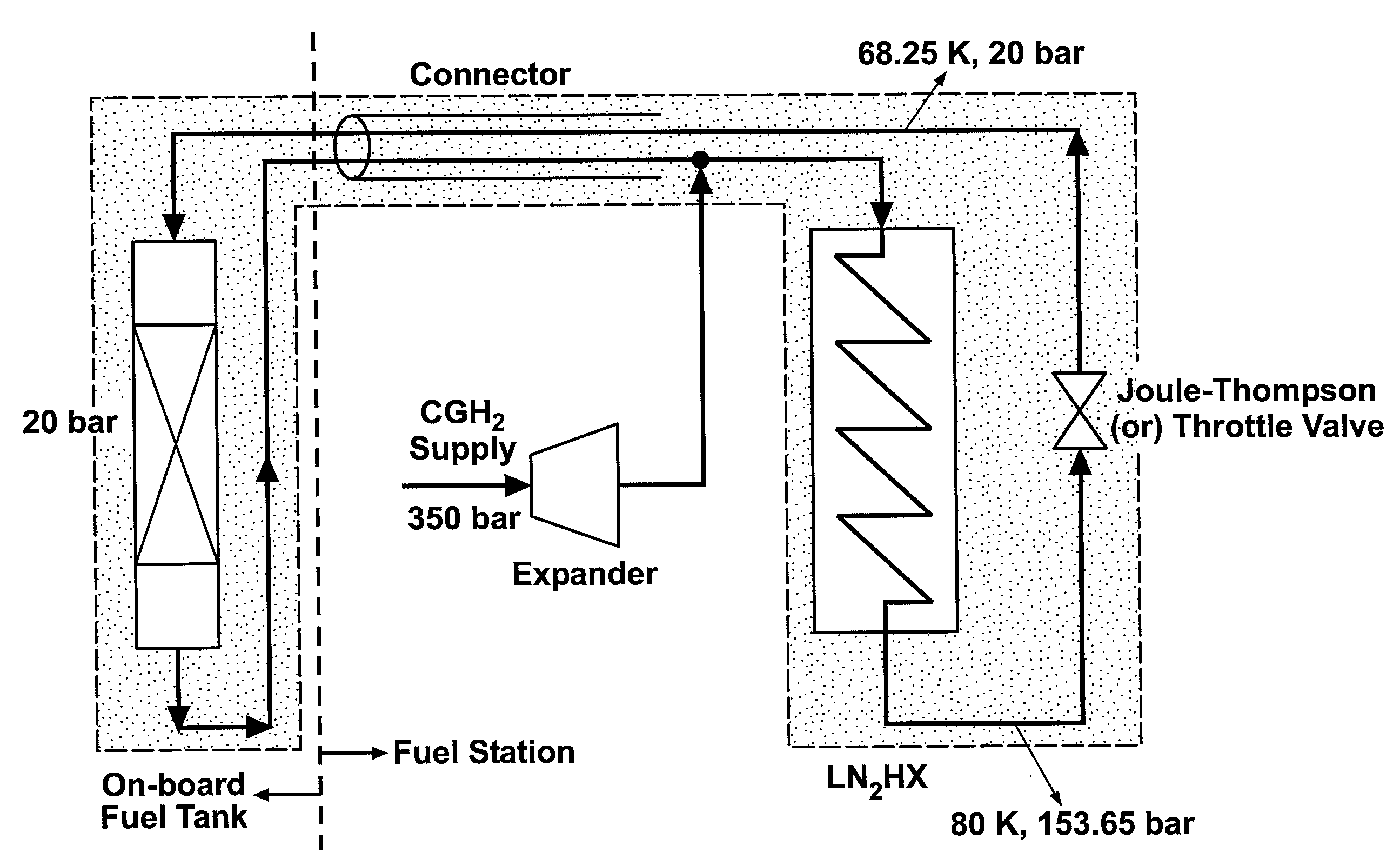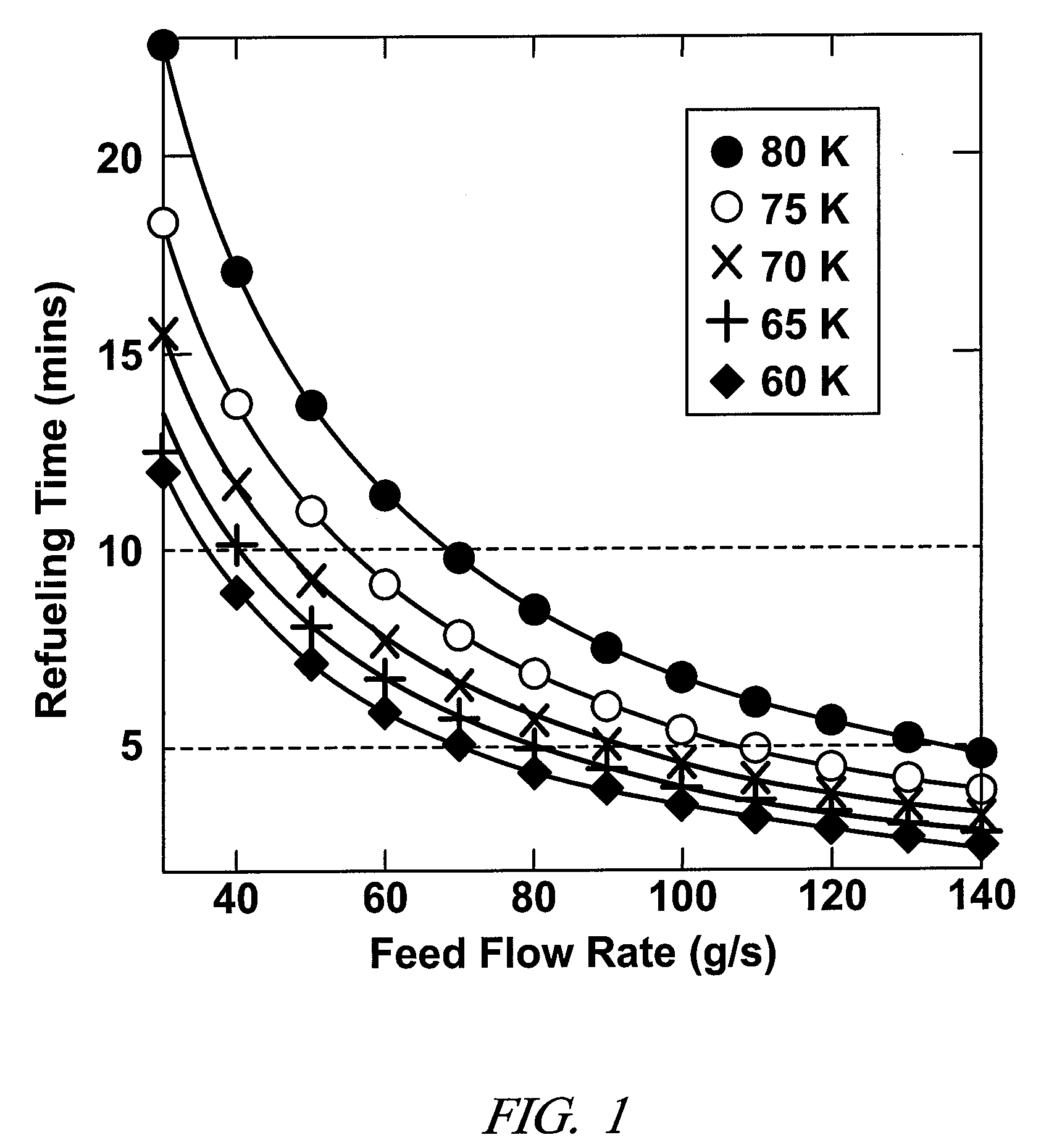Preparing hydrogen for cryo-adsorber storage
- Summary
- Abstract
- Description
- Claims
- Application Information
AI Technical Summary
Benefits of technology
Problems solved by technology
Method used
Image
Examples
Embodiment Construction
[0017]An objective of the disclosed practices and embodiments is to reduce recirculation rates of cooled hydrogen required in refueling a cryo-adsorber fuel tank by sub-cooling the hydrogen feed below temperatures obtainable by cooling the hydrogen with liquid hydrogen.
[0018]Nano-porous adsorbents like metal-organic frameworks (MOFs) exhibit a good capacity to store hydrogen at cryogenic temperatures and high pressures. During the refueling of a cryo-adsorber fuel tank containing such adsorbents, the heat of adsorption must be removed continuously by continued circulation of cool hydrogen gas. It is contemplated that liquid nitrogen (LN2) may be used to cool hydrogen gas to a temperature (about 80K) suitable for refueling of the adsorbent particles. However, it is now determined that if liquid nitrogen alone is used for cooling, very high feed flow rates are required to meet the refueling time targets. Sub-cooling (<80 K) the feed reduces the required feed flow rate.
[0019]Thermodyna...
PUM
| Property | Measurement | Unit |
|---|---|---|
| Temperature | aaaaa | aaaaa |
| Temperature | aaaaa | aaaaa |
| Pressure | aaaaa | aaaaa |
Abstract
Description
Claims
Application Information
 Login to View More
Login to View More - R&D
- Intellectual Property
- Life Sciences
- Materials
- Tech Scout
- Unparalleled Data Quality
- Higher Quality Content
- 60% Fewer Hallucinations
Browse by: Latest US Patents, China's latest patents, Technical Efficacy Thesaurus, Application Domain, Technology Topic, Popular Technical Reports.
© 2025 PatSnap. All rights reserved.Legal|Privacy policy|Modern Slavery Act Transparency Statement|Sitemap|About US| Contact US: help@patsnap.com



